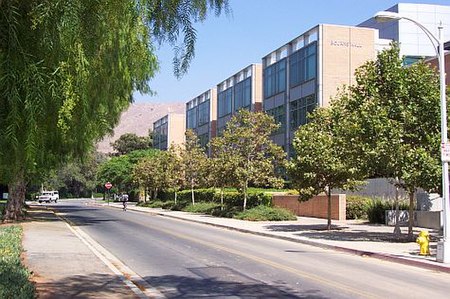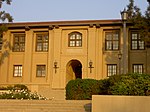Bourns College of Engineering

The Marlan and Rosemary Bourns College of Engineering, or commonly known as Bourns Engineering or BCOE, is an Accreditation Board for Engineering and Technology-accredited College of Engineering located in Riverside, California on the campus of the University of California, Riverside. The Marlan and Rosemary Bourns College of Engineering was established in 1989, and named in honor of Marlan Bourns, a B.S. physics graduate of the University of Michigan and Rosemary Bourns, founders of Bourns, Inc. BCOE is home to the world's largest indoor atmospheric chamber, an 8,000 square foot class 100/1,000 cleanroom, a 4,300 square foot mechanical engineering machine shop and a 13-ton 3 Tesla Siemens Prisma MRI machine and more. The college has over 300,000 square feet of lab and research space. Notable research centers include the Center for Environmental Research & Technology, Winston Chung Global Energy Center, Center for Research and Education in Cyber Security and Privacy, and the Center for Research in Intelligent Systems.
Excerpt from the Wikipedia article Bourns College of Engineering (License: CC BY-SA 3.0, Authors, Images).Bourns College of Engineering
North Campus Drive, Riverside
Geographical coordinates (GPS) Address Nearby Places Show on map
Geographical coordinates (GPS)
| Latitude | Longitude |
|---|---|
| N 33.975 ° | E -117.32694444444 ° |
Address
North Campus Drive
92521 Riverside
California, United States
Open on Google Maps





